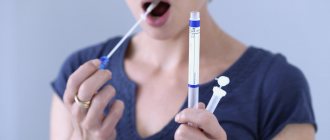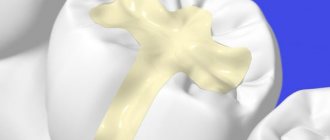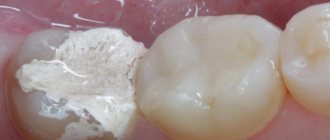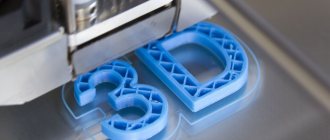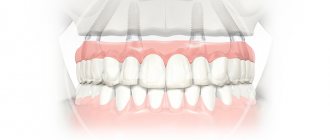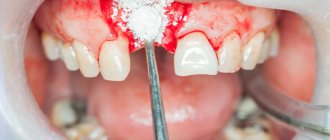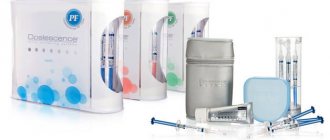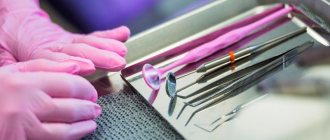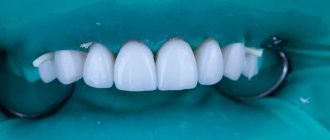pH is normal. pH of the human body
According to researcher, biochemist and microbiologist Mikhail Nikolaevich Zakhvatkin, the development of many diseases in the body depends on a single cause. Doctors call this cause “Acid and Alkali”, in other words, it is important for the body to determine the acidity (pH) of the blood, pH of urine, pH of saliva. Of course, if the acidity in the body is high, then most of the most important systems fail, and avoiding the development of diseases becomes more and more difficult every day. Maintaining pH levels in the body is not as difficult as it seems at first glance. Thanks to the balance of the pH of the environment, the body is able to fight diseases; normal metabolism of the body is maintained only at the pH level of the internal environment, promoting the correct flow of processes. First of all, you need to check the acid-base balance to determine the pH of saliva or urine, you can use test strips. If you wish, you can buy pH test strips in our online store by leaving a request on the website. It is very important to promptly determine and take measures to change the pH of the human body. The human body tries to balance the ratio and pH level as much as possible. If the balance of this level is disturbed, then you should urgently consult a doctor to promptly combat emerging diseases.
How is the pH value determined?
Water contains some hydrogen ions H+ and hydroxyl ions OH-. Acidity in water determines the number of hydrogen ions, and alkali determines hydroxyl ions. The acidic property of a liquid is determined by the presence of a large number of hydrogen ions, and the alkaline liquid is determined by the predominance of hydroxyl ions. In laboratories, the pH value is used to determine the acidity of a solution. The hydrogen exponent is equal to the negative decimal logarithm of the activity of hydrogen ions, that is, pH. It is determined by a value from 0 to 14 in professional laboratory conditions. We suggest you buy and use pH indicator test strips to determine the acidity of saliva, urine, and liquid at home, with a value from 0 to 12. There is a special comparison scale with color determination from cherry-burgundy to dark blue. If the value is less than 7, then the liquid solution is acidic, and if it is more, then the solution is alkaline.
Urine pH level
Urine PN levels should range from 6.0 to 6.4 in the morning, and in the evening - from 6.4 to 7.0. Thus, if your readings coincide with urine pH standards, this means that your body is normal. Urine pH indicates how well the body absorbs beneficial minerals, such as magnesium, potassium, calcium, and sodium. With constant elevated levels of acidity, bones become brittle. To change the situation, you need to balance your diet and choose an individual diet.
Saliva pH level
Saliva PN levels should be between 6.4 and 6.8 throughout the day. Thus, if your indicators coincide with the pH standards of saliva, this means that your body is healthy. The test shows the activity of enzymes in the digestive tract, liver and stomach. If there are deviations from the norm, you should immediately consult a doctor. The best pH values for saliva and urine should be between 6.4 and 6.5. It is also necessary to measure correctly: one hour before a meal or two hours after a meal. It is not recommended to check changes in the pH of the human body more than twice a week and three times a day.
Blood pH level
A blood pH test should give a reading between 7.36 and 7.42. If there is a discrepancy of 0.1, then this can expose the body to serious pathology, and if there is a discrepancy of 0.3, the person dies. Blood PSH levels can only be determined in laboratory rooms. In order to avoid the development and manifestation of many diseases, it is necessary to eat properly, drink “living” or “dead” water to balance the pH balance in the body. In our online store you can buy a water activator to gain health and long life.
Acidity (pH)
Acidity
(lat.
aciditas
) - a characteristic of the activity of hydrogen ions in solutions and liquids. In medicine, the acidity of biological fluids (blood, urine, gastric juice and others) is a diagnostically important parameter of the patient’s health status. In gastroenterology, for the correct diagnosis of a number of diseases, for example, the esophagus and stomach, a one-time or even average acidity value is not significant. Most often, it is important to understand the dynamics of changes in acidity during the day (night acidity often differs from daytime) in several zones of the organ. Sometimes it is important to know the change in acidity as a reaction to certain irritants and stimulants.
Content
- pH value
- Some misconceptions
- pH value for some foods and water
- Acidity and Digestive Enzymes
- Acidity of saliva and oral cavity
- Acidity of the secretion of the pharynx and larynx
- Acidity in the esophagus
- Acidity in the stomach. High and low acidity
- Acidity in the intestines
- Stool acidity
- Blood acidity
- Acidity of urine
- Acidity of the vagina, cervical canal and uterine cavity
- Publications for healthcare professionals addressing the issue of acidity in the female genital organs
- Sperm acidity
- Skin acidity
- Acidity of other human biological fluids
- Publications for healthcare professionals addressing the issue of acidity in the digestive system
- Measures and standards of acidity
pH value
In solutions, inorganic substances: salts, acids and alkalis are separated into their constituent ions. In this case, hydrogen ions H+ are carriers of acidic properties, and OH− ions are carriers of alkaline properties. In highly dilute solutions, the acidic and alkaline properties depend on the concentrations of H+ and OH− ions. In ordinary solutions, acidic and alkaline properties depend on the activities of the aH and aOH ions, that is, on the same concentrations, but adjusted for the activity coefficient γ, which is determined experimentally. For aqueous solutions, the equilibrium equation applies: аН × аОН = Кw, where Кw is a constant, the ionic product of water (Кw = 10−14 at a water temperature of 22 °C). From this equation it follows that the activity of hydrogen ions H+ and the activity of OH− ions are interconnected. Danish biochemist S.P.L. In 1909, Sørensen proposed to show the hydrogen pH
, equal by definition to the decimal logarithm of the activity of hydrogen ions, taken with a minus (Rapoport S.I. et al.):
pH = - log (a H)
.
Based on the fact that in a neutral environment aH = aON and from the equality for pure water at 22 °C: aH× aON = Kw = 10−14, we obtain that the acidity of pure water at 22 °C (that is, neutral acidity) = 7 units pH.
Solutions and liquids with respect to their acidity are considered:
- neutral at pH = 7
- acidic at pH < 7
- alkaline at pH > 7
Some misconceptions
If one of the patients says that he has “zero acidity,” then this is nothing more than a turn of phrase, meaning, most likely, that he has a neutral acidity value (pH = 7).
In the human body, the acidity value cannot be less than 0.86 pH. It is also a common misconception that acidity values can only range from 0 to 14 pH. In technology, the acidity indicator can be negative or greater than 20. When talking about the acidity of an organ, it is important to understand that acidity can often differ significantly in different parts of the organ. The acidity of the contents in the lumen of the organ and the acidity on the surface of the mucous membrane of the organ are also often not the same. It is typical for the mucous membrane of the body of the stomach that the acidity on the surface of the mucus facing the lumen of the stomach is 1.2–1.5 pH, and on the side of the mucus facing the epithelium it is neutral (7.0 pH).
pH value for some foods and water
The table below shows the acidity values of some common foods and pure water at different temperatures:
| Product | Acidity, units pH |
| Lemon juice | 2,1 |
| Wine | 3,5 |
| Tomato juice | 4,1 |
| Orange juice | 4,2 |
| Black coffee | 5,0 |
| Pure water at 100 °C | 6,13 |
| Pure water at 50 °C | 6,63 |
| Fresh milk | 6,68 |
| Pure water at 22 °C | 7,0 |
| Pure water at 0°C | 7,48 |
Acidity and Digestive Enzymes
Many processes in the body are impossible without the participation of special proteins - enzymes, which catalyze chemical reactions in the body without undergoing chemical transformations.
The digestive process is not possible without the participation of a variety of digestive enzymes, which break down various organic food molecules and act only in a narrow range of acidity (different for each enzyme). The most important proteolytic enzymes (breaking down food proteins) of gastric juice: pepsin, gastrixin and chymosin (rennin) are produced in an inactive form - in the form of proenzymes and are later activated by hydrochloric acid of gastric juice. Pepsin is most active in a strongly acidic environment, with a pH of 1 to 2, gastrixin has maximum activity at pH 3.0–3.5, chymosin, which breaks down milk proteins into insoluble casein protein, has maximum activity at pH 3.0–3.5 . Proteolytic enzymes secreted by the pancreas and “acting” in the duodenum: trypsin has an optimum action in a slightly alkaline environment, at pH 7.8–8.0; chymotrypsin, which is close to it in functionality, is most active in an environment with an acidity of up to 8.2. The maximum activity of carboxypeptidases A and B is 7.5 pH. Similar maximum values are found for other enzymes that perform digestive functions in the slightly alkaline environment of the intestine.
Reduced or increased acidity relative to the norm in the stomach or duodenum, thus, leads to a significant decrease in the activity of certain enzymes or even their exclusion from the digestive process, and, as a consequence, to digestive problems.
Acidity of saliva and oral cavity
The acidity of saliva depends on the rate of salivation.
Typically, the acidity of mixed human saliva is 6.8–7.4 pH, but with high salivation rates it reaches 7.8 pH. The acidity of the saliva of the parotid glands is 5.81 pH, of the submandibular glands - 6.39 pH. In children, on average, the acidity of mixed saliva is 7.32 pH, in adults - 6.40 pH (Rimarchuk G.V. et al.).
Acid gastroesophageal and pharyngolaryngeal refluxes reaching the oral cavity play a leading role in the occurrence of oral pathology. As a result of the ingress of hydrochloric acid, the acidity of mixed saliva decreases below 7.0 pH. Saliva, normally enriched with calcium, phosphates, containing carbonates, sodium, potassium, magnesium and having alkaline properties, at low pH, especially at values of 6.2–6.0, leads to focal demineralization of tooth enamel with the appearance of erosions of hard dental tissues and the formation of cavities in them - caries (Novikova V.P., Shabanov A.M.).
The acidity of dental plaque depends on the condition of the hard tissues of the teeth. Being neutral in healthy teeth, it shifts to the acidic side, depending on the degree of development of caries and the age of adolescents. In 12-year-old adolescents with the initial stage of caries (precaries), the acidity of dental plaque is 6.96 ± 0.1 pH, in 12–13-year-old adolescents with average caries, the acidity of dental plaque is from 6.63 to 6.74 pH, in 16 -year-old adolescents with superficial and medium caries, the acidity of dental plaque is, respectively, 6.43 ± 0.1 pH and 6.32 ± 0.1 pH (Krivonogova L.B.).
Acidity of the secretion of the pharynx and larynx
The acidity of the secretion of the pharynx and larynx in healthy people and patients with chronic laryngitis and pharyngolaryngeal reflux is different (A.V. Lunev):
| Groups of surveyed | pH measurement location | |
| Pharynx , units pH | Larynx , units pH | |
| Healthy faces | 6,5 | 6,5 |
| Patients with chronic laryngitis without GERD | 5,6 | 5,6 |
| Patients with pharyngolaryngeal reflux | 4,9 | 4,9 |
| Patients with GERD without pharyngolaryngeal reflux | 5,2 | 5,2 |
The average pH value of the secretion of the pharynx and larynx within the groups does not have significant differences. In patients, when compared with a group of healthy individuals, the acidity of the secretions of the pharynx and larynx is higher (i.e., the pH is lower).
Acidity in the esophagus
Normal acidity in the esophagus is 6.0–7.0 pH. In addition to food and consumed liquid, the esophagus periodically receives saliva, which has neutral and slightly alkaline acidity, as well as refluxate, which is thrown from the stomach by gastroesophageal reflux. More often, refluxate has an acidity corresponding to the acidity of the stomach. Therefore, while gastric refluxate is in the esophagus, the acidity of the latter increases, the pH value decreases to 1.5–2. If there are relatively few gastroesophageal refluxes, they are considered physiological and do not affect the condition of the esophagus. Otherwise, refluxate may irritate the esophageal epithelium and develop gastroesophageal reflux disease.
The figure above shows a graph of acidity in the esophagus of a healthy person, obtained using intragastric pH-metry (Rapoport S.I.). The graph clearly shows gastroesophageal refluxes - sharp decreases in acidity to 2-3 pH, which in this case are physiological.
Acidity in the stomach. High and low acidity
The maximum observed acidity in the stomach is 0.86 pH, which corresponds to an acid production of 160 mmol/l.
The minimum acidity in the stomach is 8.3 pH, which corresponds to the acidity of a saturated solution of HCO3- ions. Normal acidity in the lumen of the body of the stomach on an empty stomach is 1.5–2.0 pH. The acidity on the surface of the epithelial layer facing the lumen of the stomach is 1.5–2.0 pH. The acidity in the depths of the epithelial layer of the stomach is about 7.0 pH. Normal acidity in the antrum of the stomach is 1.3–7.4 pH. The cause of many diseases of the digestive tract is an imbalance in the processes of acid production and acid neutralization. Long-term hypersecretion of hydrochloric acid or lack of acid neutralization, and, as a consequence, increased acidity in the stomach and/or duodenum, causes so-called acid-dependent diseases. Currently, these include: peptic ulcer of the stomach and duodenum, gastroesophageal reflux disease (GERD), erosive and ulcerative lesions of the stomach and duodenum while taking aspirin or non-steroidal anti-inflammatory drugs (NSAIDs), Zollinger-Ellison syndrome, gastritis and gastroduodenitis with high acidity and others.
Reduced acidity is observed with anacid or hypoacid gastritis or gastroduodenitis, as well as with stomach cancer. Gastritis (gastroduodenitis) is called anacid or gastritis (gastroduodenitis) with low acidity if the acidity in the body of the stomach is approximately 5 units or more. pH. The cause of low acidity is often atrophy of parietal cells in the mucous membrane or disturbances in their functions.
Above is a graph of the acidity (daily pH gram) of the body of the stomach of a healthy person (dashed line) and a patient with a duodenal ulcer (solid line). Moments of eating are marked with arrows labeled “Food”. The graph shows the acid-neutralizing effect of food, as well as increased stomach acidity with duodenal ulcer (Yakovenko A.V.).
Acidity in the intestines
Normal acidity in the duodenal bulb is 5.6–7.9 pH.
The acidity in the jejunum and ileum is neutral or slightly alkaline and ranges from 7 to 8 pH. The acidity of small intestine juice is 7.2–7.5 pH. With increased secretion it reaches 8.6 pH. The acidity of the secretion of the duodenal glands is from pH 7 to 8 pH. The acidity of colon juice is 8.5–9.0 pH.
In the lower parts of the colon, pH values of acidity gradually increase, reaching a maximum pH value in the region of the rectosigmoid junction. The following table shows the acidity in the sigmoid and rectum of a healthy person, obtained by targeted endoscopic pH-metry (Churkin I.A.):
| Measuring point | Point number in the figure | Acidity, units pH |
| Proximal sigmoid colon | 7 | 7,9±0,1 |
| Middle sigmoid colon | 6 | 7,9±0,1 |
| Distal sigmoid colon | 5 | 8,7±0,1 |
| Supraampullary rectum | 4 | 8,7±0,1 |
| Upper ampullary rectum | 3 | 8,5±0,1 |
| Mid-ampullary rectum | 2 | 7,7±0,1 |
| Inferior ampullary rectum | 1 | 7,3±0,1 |
Stool acidity
The acidity of the feces of a healthy person eating a mixed diet is determined by the vital activity of the colon microflora and is equal to 6.8–7.6 pH. Stool acidity is considered normal in the range from 6.0 to 8.0 pH. The acidity of meconium (original feces of newborns) is about 6 pH. Deviations from the norm for stool acidity:
- sharply acidic (pH less than 5.5) occurs with fermentative dyspepsia
- acidic (pH from 5.5 to 6.7) may be due to impaired absorption of fatty acids in the small intestine
- alkaline (pH from 8.0 to 8.5) may be due to the rotting of food proteins not digested in the stomach and small intestine and inflammatory exudate as a result of activation of putrefactive microflora and the formation of ammonia and other alkaline components in the large intestine
- sharply alkaline (pH more than 8.5) occurs with putrefactive dyspepsia (colitis)
Blood acidity
The acidity of human arterial blood plasma ranges from 7.37 to 7.43 pH, averaging 7.4 pH.
The acid-base balance in human blood is one of the most stable parameters, maintaining acidic and alkaline components in a certain balance within very narrow limits. Even a small shift from these limits can lead to severe pathology. When shifting to the acidic side, a condition called acidosis occurs, and to the alkaline side, alkolosis occurs. A change in blood acidity above 7.8 pH or below 6.8 pH is incompatible with life. The acidity of venous blood is 7.32–7.42 pH. The acidity of red blood cells is 7.28–7.29 pH.
Acidity of urine
In a healthy person with a normal drinking regime and a balanced diet, the acidity of urine is in the range from 5.0 to 6.0 pH, but can range from 4.5 to 8.0 pH.
The acidity of the urine of a newborn under the age of one month is normal - from 5.0 to 7.0 pH. The acidity of urine increases if a person’s diet is dominated by meat foods rich in proteins. Heavy physical work increases the acidity of urine. A dairy-vegetable diet causes urine to become slightly alkaline. Increased acidity of urine is observed with increased acidity of the stomach. Reduced acidity of gastric juice does not affect the acidity of urine. A change in urine acidity most often corresponds to a change in blood acidity. The acidity of urine changes with many diseases or conditions of the body, so determining the acidity of urine is an important diagnostic factor.
Under normal conditions, in a healthy person, the urine reaction is slightly acidic, the pH fluctuates depending on the diet between 4.5 and 8. With protein-rich foods, urine usually gives an acidic reaction, and with plant foods, an alkaline reaction. When diphosphates are released, a slightly alkaline reaction is observed. Under pathological conditions, urine can also give a strongly alkaline reaction, and in this case it is usually cloudy. With respiratory alkalosis (hyperventilation) or metabolic alkalosis, loss of acids with gastric juice, and a decrease in the amount of potassium in the blood, the urine reaction becomes alkaline. An acidic urine reaction is observed during fasting, severe diarrhea, acidosis, or after ingestion of acidifying drugs (ammonium chloride). Research is carried out only with freshly released urine. The easiest way to conduct research is with blue and red litmus paper. Acidic urine changes the litmus color from blue to red, and alkaline urine changes the litmus color from red to blue. The true reaction of urine is better determined by universal indicator paper with a range from 1-14 (Ishmanov M.Yu. et al.).
Acidity of the vagina, cervical canal and uterine cavity
The normal acidity of a woman's vagina ranges from 3.8 to 4.4 pH and averages 4.0 to 4.2 pH. Vaginal acidity in various diseases:
- cytolytic vaginosis: acidity less than 4.0 pH
- normal microflora: acidity from 4.0 to 4.5 pH
- candidal vaginitis: acidity from 4.0 to 4.5 pH
- Trichomonas colpitis: acidity from 5.0 to 6.0 pH
- bacterial vaginosis: acidity greater than 4.5 pH
- atrophic vaginitis: acidity greater than 6.0 pH
- aerobic vaginitis: acidity greater than 6.5 pH
Lactobacilli (lactobacillus) and, to a lesser extent, other representatives of normal microflora are responsible for maintaining an acidic environment and suppressing the growth of opportunistic microorganisms in the vagina.
In the treatment of many gynecological diseases, restoration of the lactobacilli population and normal acidity comes to the fore. According to Ivshin V.G. et al. (2020) in the area of the external pharynx the environment is acidic: pH = 6.42 ± 0.026. Along the course of the cervical canal, the pH value gradually increases. In the area of the internal pharynx, the pH value approaches neutral: 6.96 ± 0.013. As the sensor moves into the uterine cavity, a gradual increase in pH is observed from 7.14 ± 0.11 to 7.19 ± 0.11. On the mucous membrane of the uterine fundus, the environment is slightly alkaline: pH = 7.22 ± 0.007.
Publications for healthcare professionals addressing the issue of acidity in the female genital organs
- Murtazina Z.A., Yashchuk G.A., Galimov R.R., Dautova L.A., Tsvetkova A.V. Office diagnostics of bacterial vaginosis using hardware topographic pH-metry. Russian Bulletin of Obstetrician-Gynecologist. 2017;17(4): 54-58.
- Yashchuk A.G., Galimov R.R., Murtazina Z.A. A method for express diagnostics of disorders of vaginal biocenosis using hardware topographic pH-metry. Patent RU 2651037 C1.
- Gasanova M.K. Modern approaches to the diagnosis and treatment of serozometra in postmenopause. Abstract of dissertation. PhD, 14.00.01 - obstetrics and gynecology. RMAPO, Moscow, 2008.
Sperm acidity
The normal acidity level of sperm is between 7.2 and 8.0 pH. Deviations from these values are not in themselves considered pathology. At the same time, in combination with other deviations, it may indicate the presence of a disease. An increase in the pH level of sperm occurs during an infectious process. A sharply alkaline reaction of sperm (acidity approximately 9.0–10.0 pH) indicates prostate pathology. When the excretory ducts of both seminal vesicles are blocked, an acidic reaction of the sperm is observed (acidity 6.0–6.8 pH). The fertilizing ability of such sperm is reduced. In an acidic environment, sperm lose motility and die. If the acidity of the seminal fluid becomes less than 6.0 pH, the sperm completely lose their motility and die.
Skin acidity
The surface of the skin is covered with a water-lipid acid mantle
or
Marchionini mantle
, consisting of a mixture of sebum and sweat, to which organic acids are added - lactic, citric and others, formed as a result of biochemical processes occurring in the epidermis.
The acidic water-lipid mantle of the skin is the first barrier of protection against microorganisms. For most people, the normal acidity of the mantle is 3.5–6.7 pH. The bactericidal property of the skin, which gives it the ability to resist microbial invasion, is due to the acidic reaction of keratin, the peculiar chemical composition of sebum and sweat, and the presence on its surface of a protective water-lipid mantle with a high concentration of hydrogen ions. The low molecular weight fatty acids it contains, primarily glycophospholipids and free fatty acids, have a bacteriostatic effect that is selective for pathogenic microorganisms. The surface of the skin is populated by normal symbiotic microflora, capable of existing in an acidic environment: Staphylococcus epidermidis, Staphylococcus aureus, Propionibacterium acnes
and others. Some of these bacteria themselves produce lactic and other acids, contributing to the formation of the skin's acid mantle.
The upper layer of the epidermis (keratin scales) is acidic with a pH value of 5.0 to 6.0. In some skin diseases, the acidity level changes. For example, with fungal diseases the pH increases to 6, with eczema to 6.5, with acne to 7.
Acidity of other human biological fluids
The acidity of fluids inside the human body normally coincides with the acidity of the blood and ranges from 7.35 to 7.45 pH. The normal acidity of some other human biological fluids is shown in the table:
| Biological fluid | Acidity is normal, units. pH |
| Cytoplasm of cells | about 7.45 |
| A tear | from 7.3 to 7.5 |
| CSF (cerebrospinal fluid) | from 7.35 to 7.8 |
| Bile | from 8.0 to 8.5 |
| Human milk | from 6.9 to 7.5 |
| Pancreatic juice | from 7.5 to 9.0 |
| Synovial fluid (knee joint) | from 7.3 to 7.6 |
| Prostate juice | from 6.6 to 6.8 |
Publications for healthcare professionals addressing the issue of acidity in the digestive system
- Rapoport S.I., Lakshin A.A., Rakitin B.V., Trifonov M.M. pH-metry of the esophagus and stomach in diseases of the upper digestive tract / Ed. Academician of the Russian Academy of Medical Sciences F.I. Komarova. – M.: ID MEDPRACTIKA-M. — 2005. – p. 208.
- Churkin I.A. The use of targeted endoscopic pH-metry to assess the functional state of the mucous membrane of the rectum and sigmoid colon. Abstract of dissertation. PhD, 03.00.13 – physiology. ASMU, Tomsk, 2002.
- Khrustaleva E.V., Pedder V.V., Shishkina N.M., Lubyanskaya T.G. Relationship between the pH level of the mucous membrane of the oropharynx and the presence of fungal flora in patients with GERD // Medical Sciences. — 2013 — No. 6.
On the website, in the Literature section, there is a subsection “Acid-dependent gastrointestinal diseases”, containing articles for healthcare professionals on this topic.
Measures and standards of acidity
For verification and calibration of acidity measuring instruments in medicine and technology, special “acidity measures”, “buffer solutions”, and “standard titers” are produced.
They are capable of maintaining a strictly established value of the acidity of the solution, which does not change during measurements and for a certain time. For more information, see Standard Titers and Calibration Buffer Solutions. In the photo on the right: buffer solutions with pH=1.2 and pH=9.18 for calibrating pH probes.
Back to section
Myth #1: The acidity of body fluids should be at 7.4Many people believe that pH of urine and saliva should be on par 7.4. However, it is not. Level pH=7.4 - this is the normal blood pH (7.35-7.45). It is different for urine and saliva.
It's normal for urine to be a little acidic because... This is the main body fluid through which excess acids are eliminated. As a rule, the pH of a healthy person's urine fluctuates around 6.0-7.0 . The pH level of saliva can be as high as 7.4, but the ideal value is around 6.8 upon waking.
Myth No. 2: It’s better to determine the body’s pH using saliva
Sometimes it is recommended to determine pH using saliva - this is more convenient and can be done anywhere, at any time. However, from the point of view of obtaining a complete and adequate picture, it is necessary to measure the pH of the urine: this will give an idea of the volume of excess acids in the body, which is excreted through the kidneys. Saliva can also be affected by the so-called. reflux - the entry of acids from the esophagus into the oral cavity - this is important for people suffering from heartburn.
Myth #3: Acidic foods acidify, while alkaline foods alkalize.
This is not always the case. Acidification of the body is the result of biochemical reactions in the body. The product itself can be acidic - with a low pH level - while having a neutral or even alkalizing effect on the body.
An example of this is fruits and berries. Almost all fruits and berries have an acidic environment (lemon, orange, apple, grapes, etc.) However, their effect on the body greatly depends on your acid metabolism and general condition. If the body is acidified, then grapes or apples can have a negative effect. Those. may acidify. If the body is not acidified and works correctly, then you may not notice any negative consequences even if you eat more than normal. However, this does not apply to store-bought juices that contain synthetic citric acid.
Myth #4: If the pH of urine and saliva is low, then the body is acidic
This is not entirely true. Acidification of the body is a chronic process. Therefore, it is important to track the trend. If within 3-5 days of measurements you observe a decreased pH level in urine or saliva, this is a sign of chronic acidification. If your urine pH = 5.4 in the morning, and in the afternoon or the next day it is 6.5, then the body has eliminated excess acids and the acid-base balance has returned to normal.
Myth No. 5: If the body is acidic, you need to drink soda
There is an opinion that the acid-base balance of the body can be restored with the help of soda. To some extent this is true. However, one should not overestimate its capabilities.
Baking soda is not a natural, but a purely chemical product - sodium bicarbonate (NaHC0ȝ). And like any chemical, it has a strong effect on the body. This may help in overcoming the acid crisis - you may feel better, but it is not a panacea. For normal functioning, the body needs a whole range of minerals - healthy, high-quality food and water.
Trying to improve the functioning of the body solely with the help of soda is reminiscent of trying to clean a polluted lake using disinfection. We can kill everything living and useful in this lake and make the water clear, but this is not a sign of harmony and balance.


